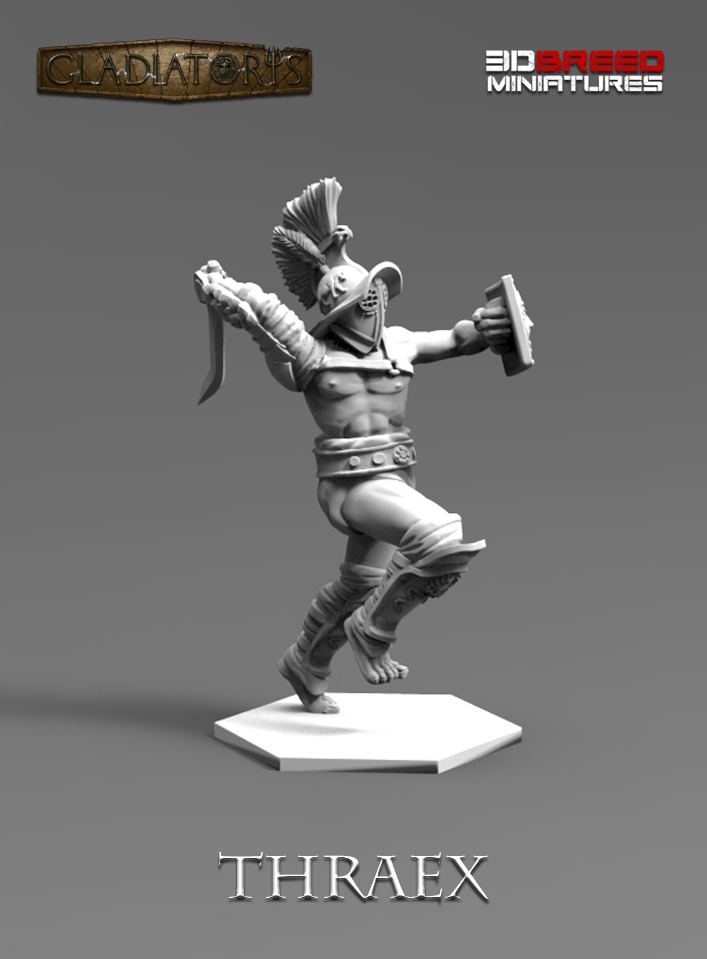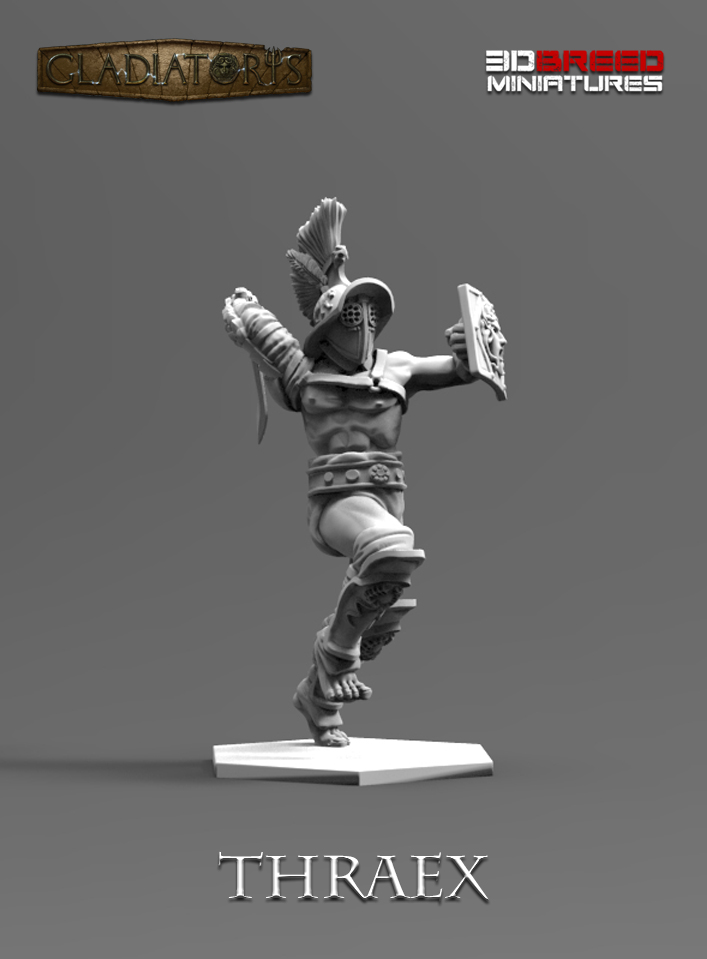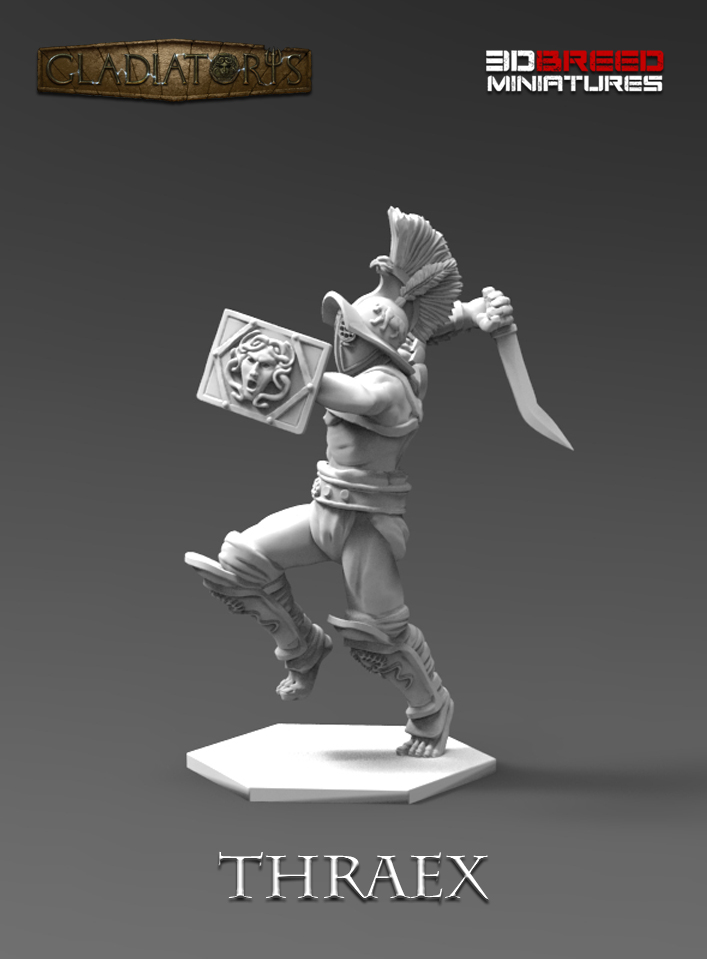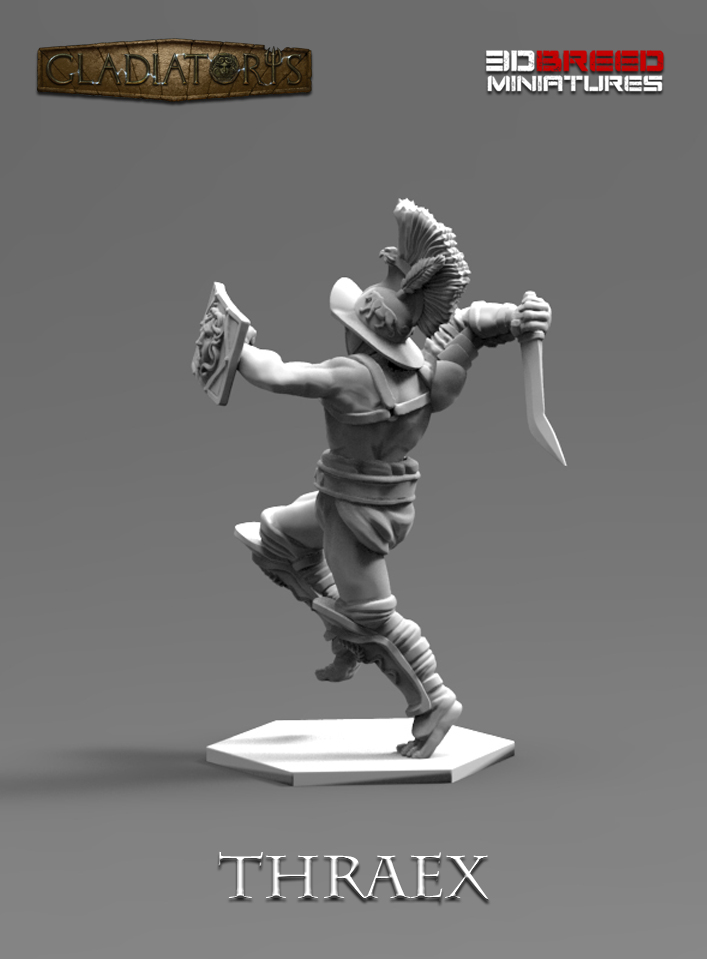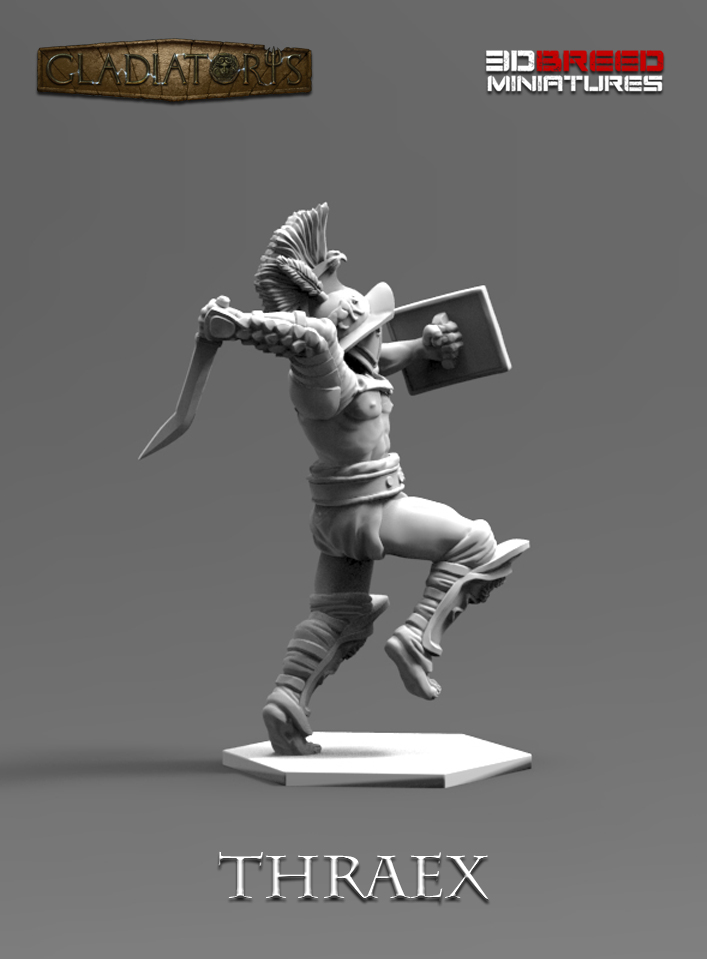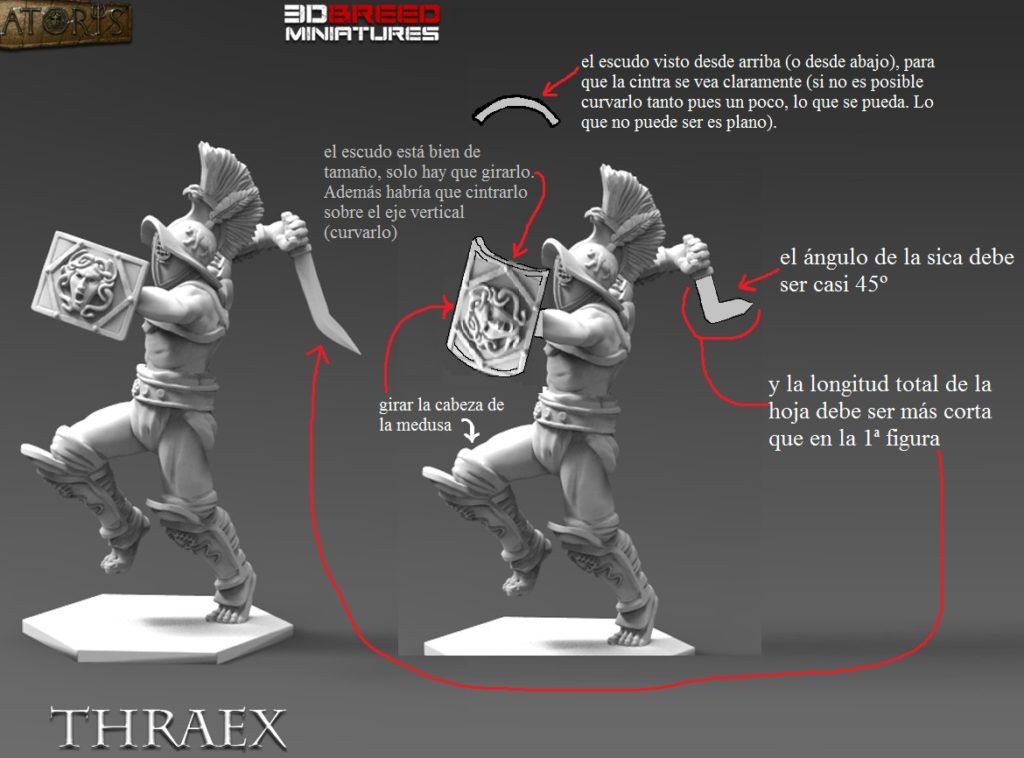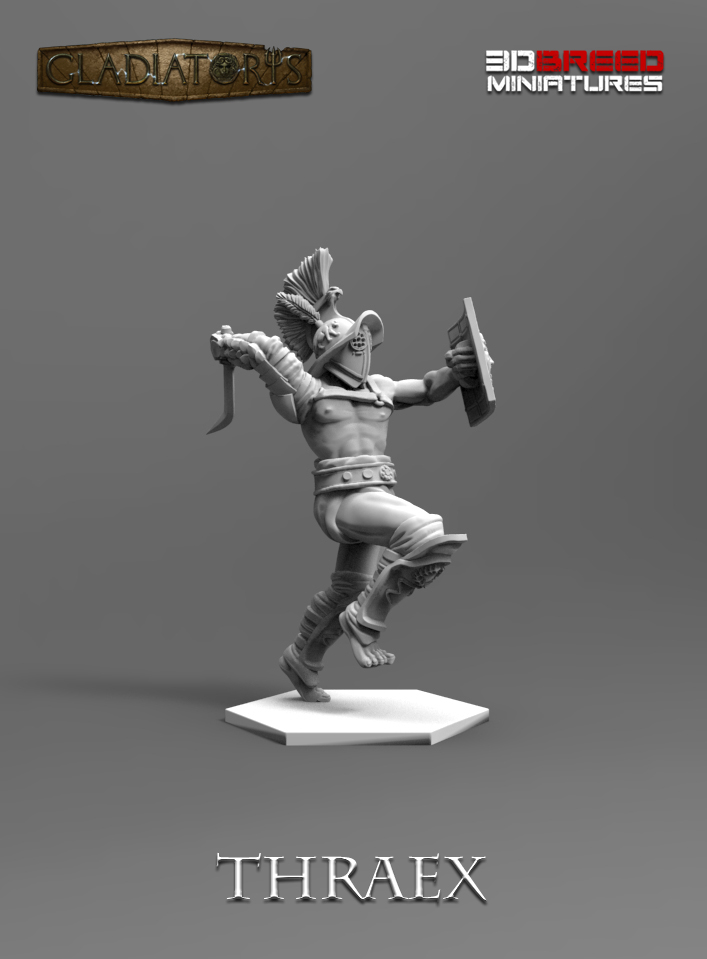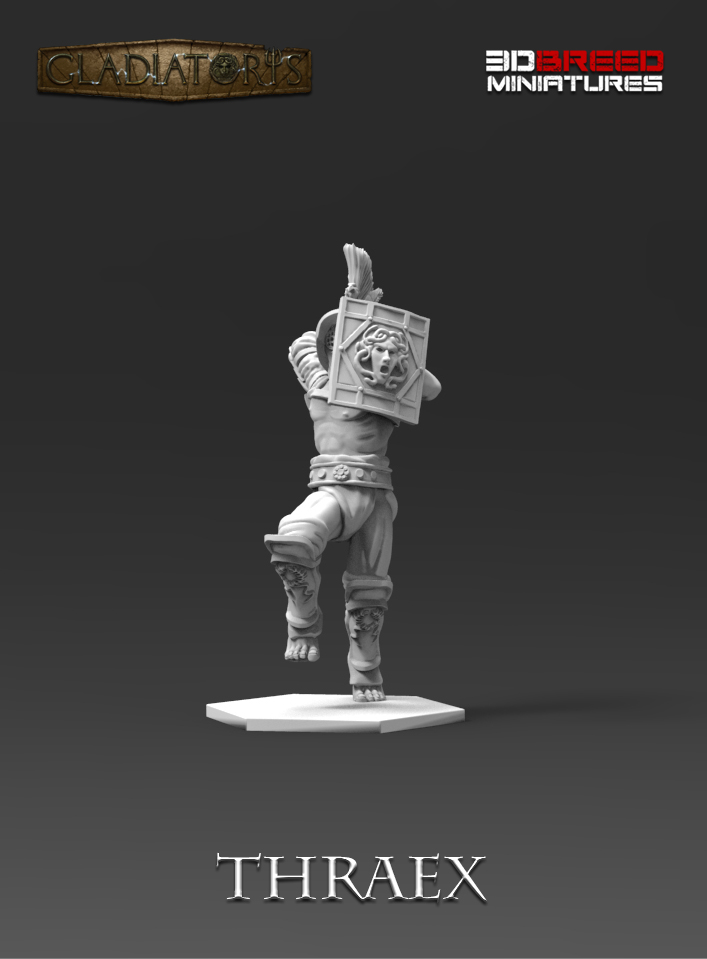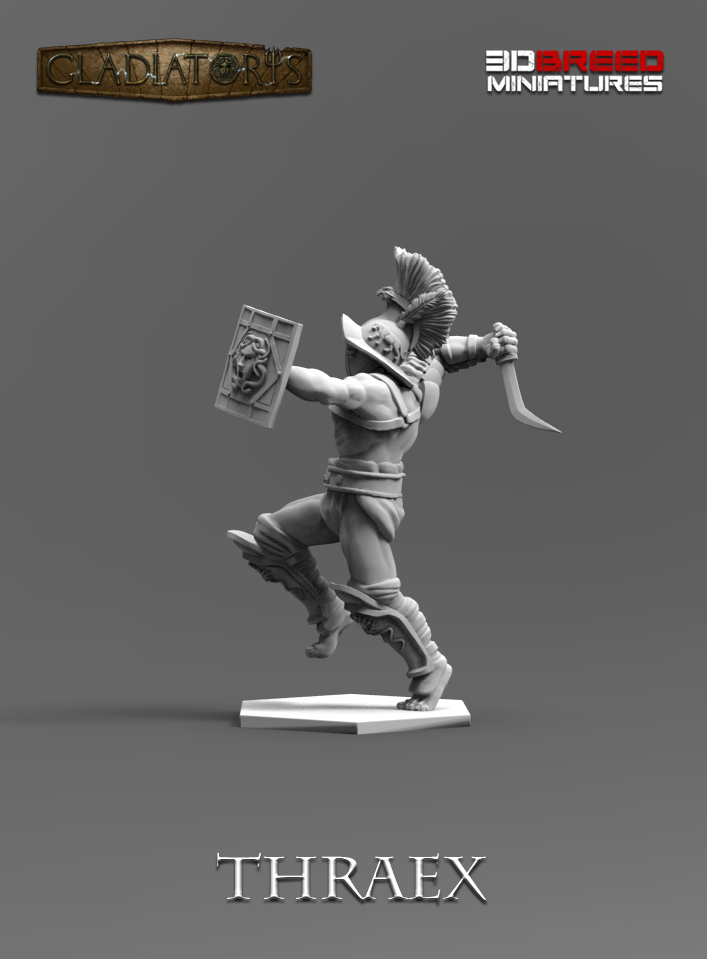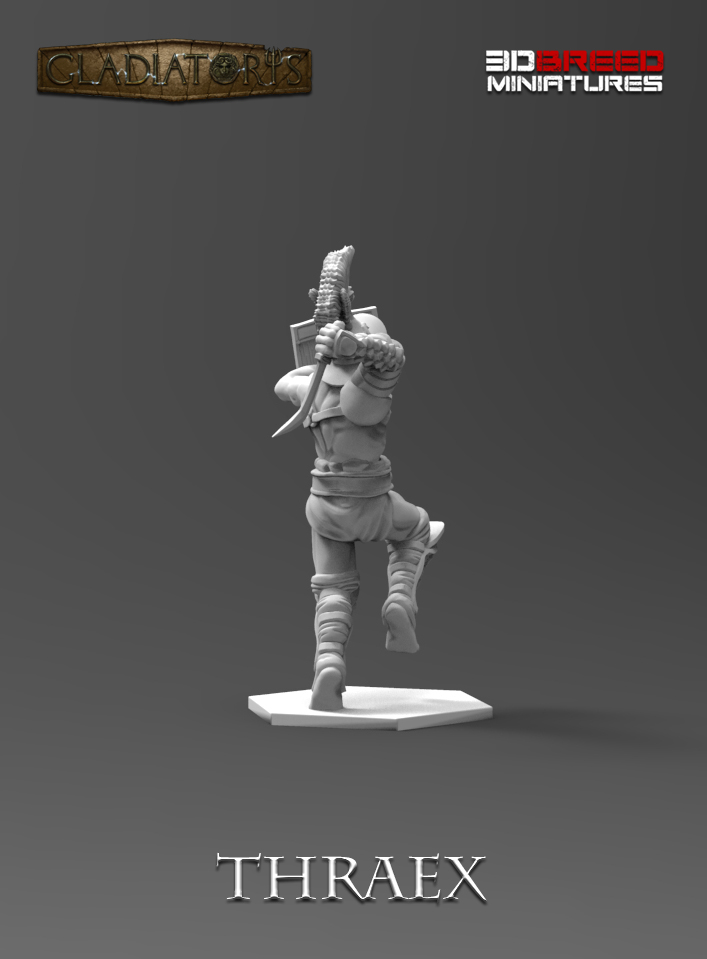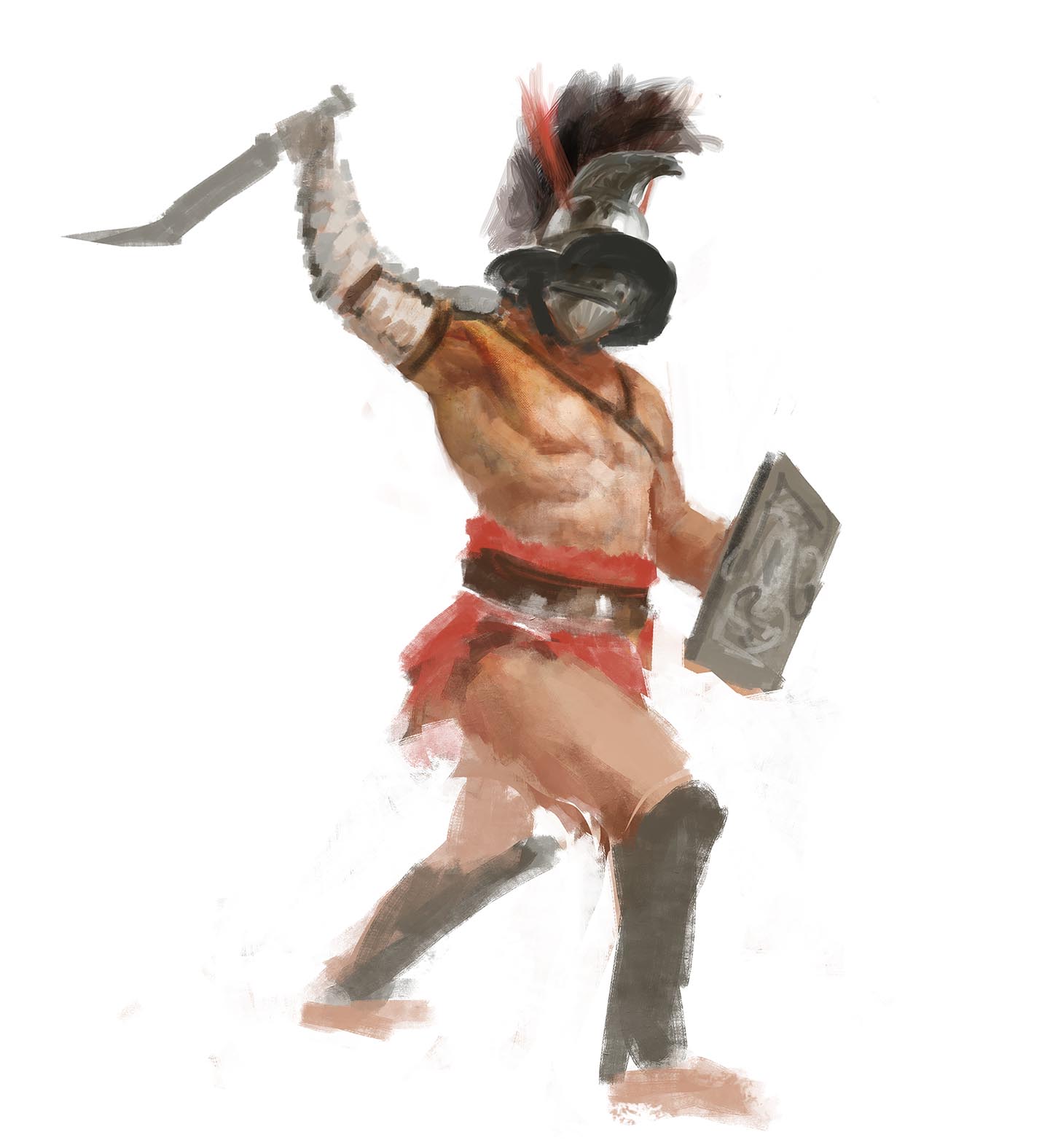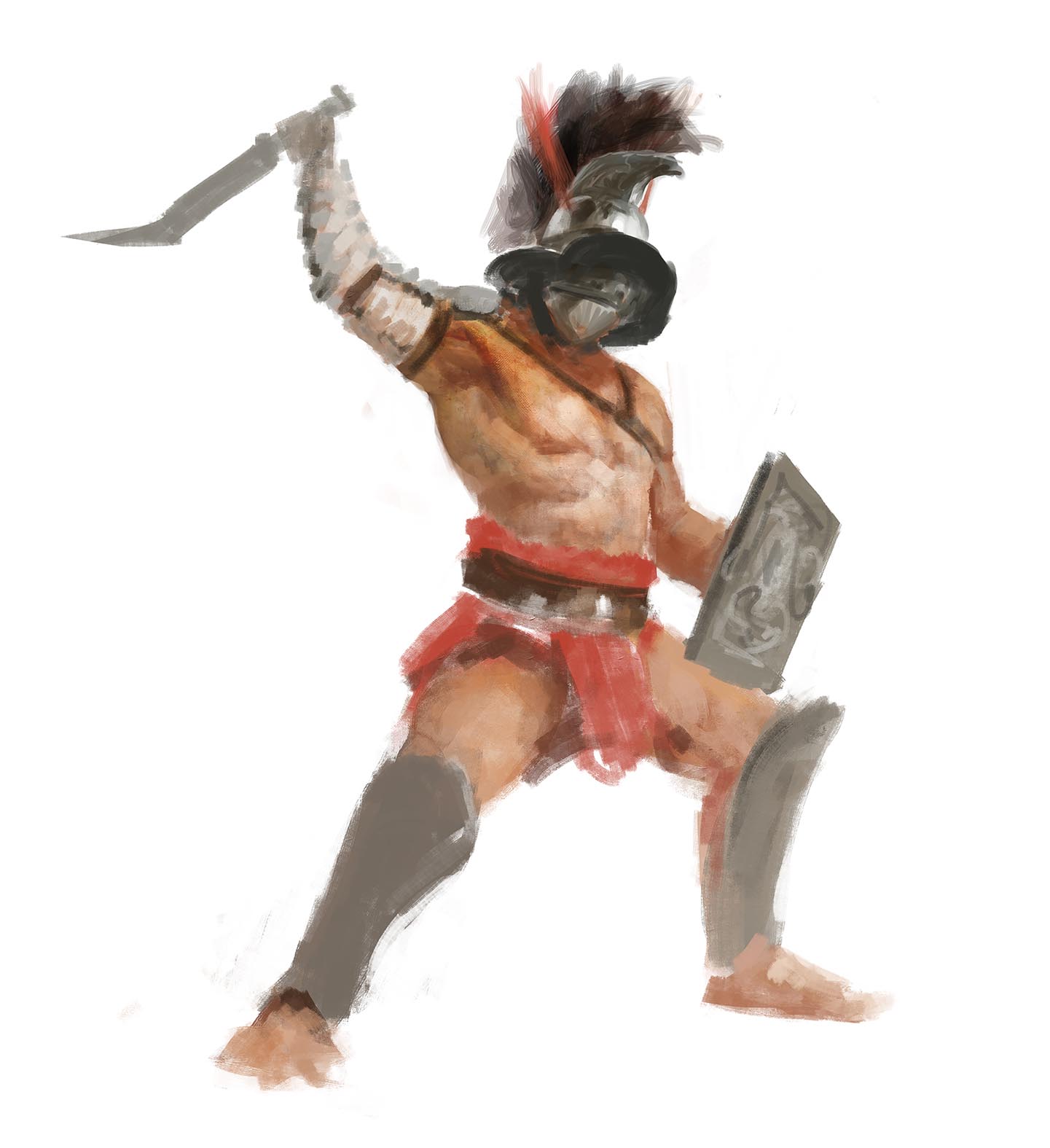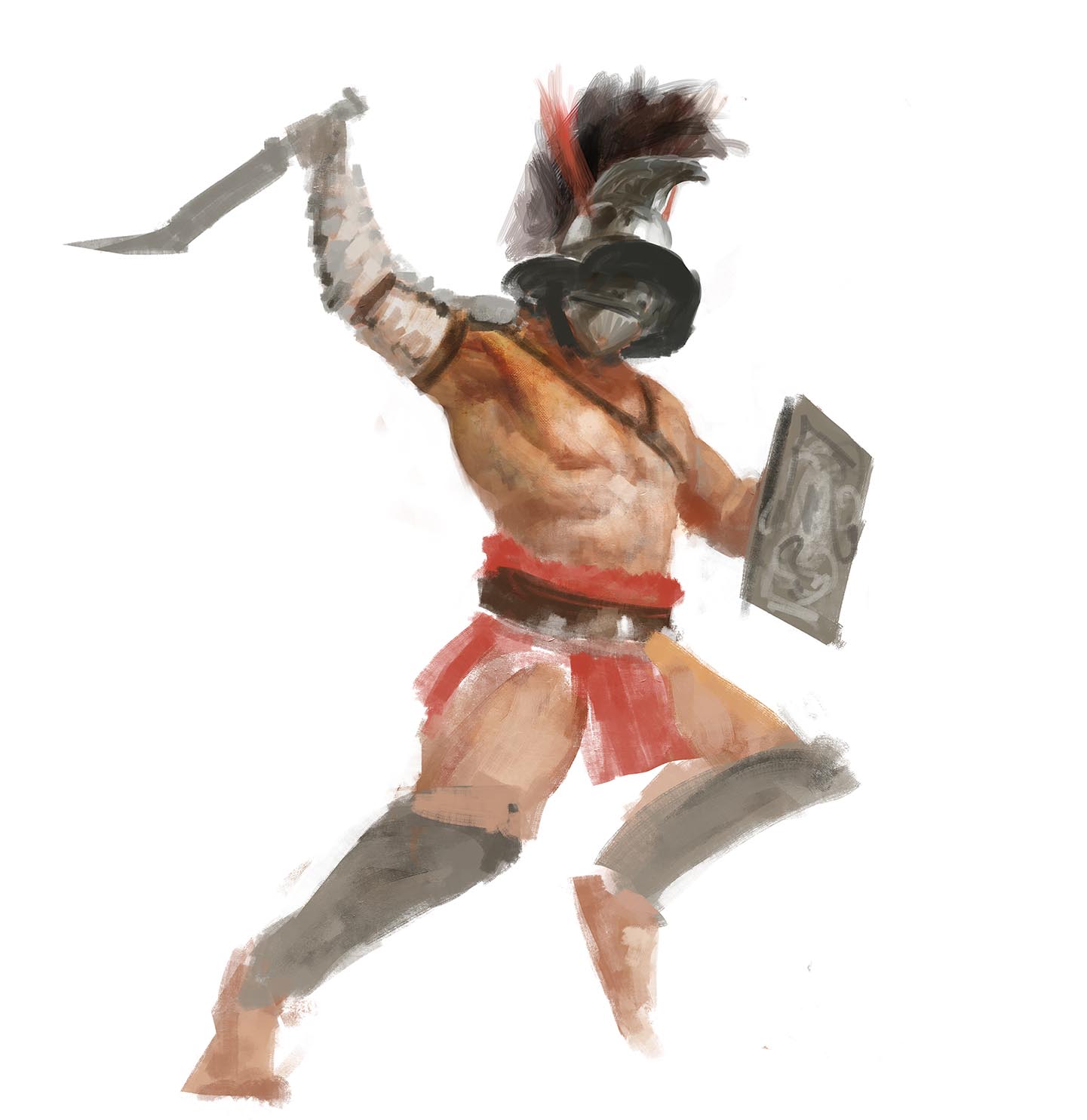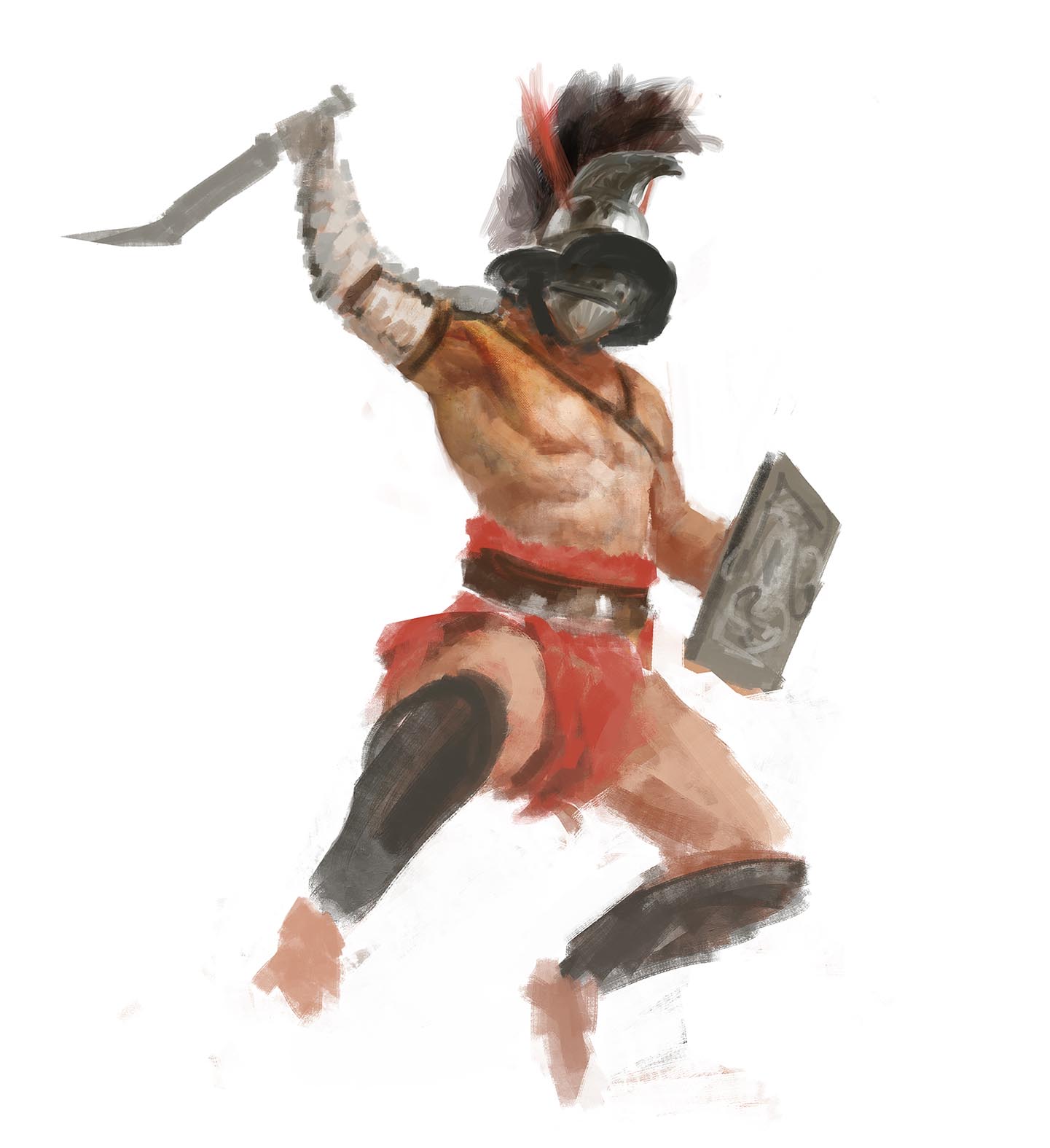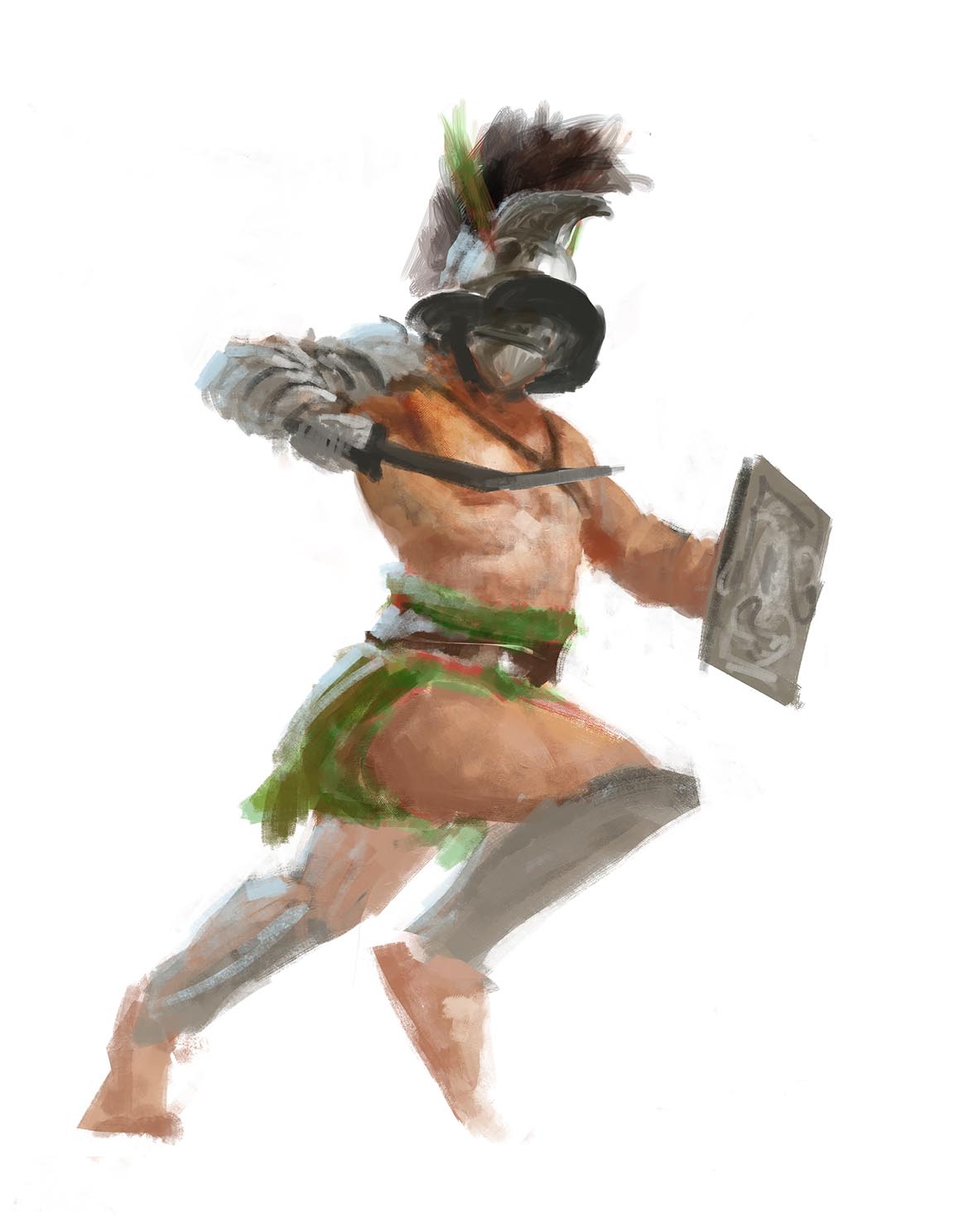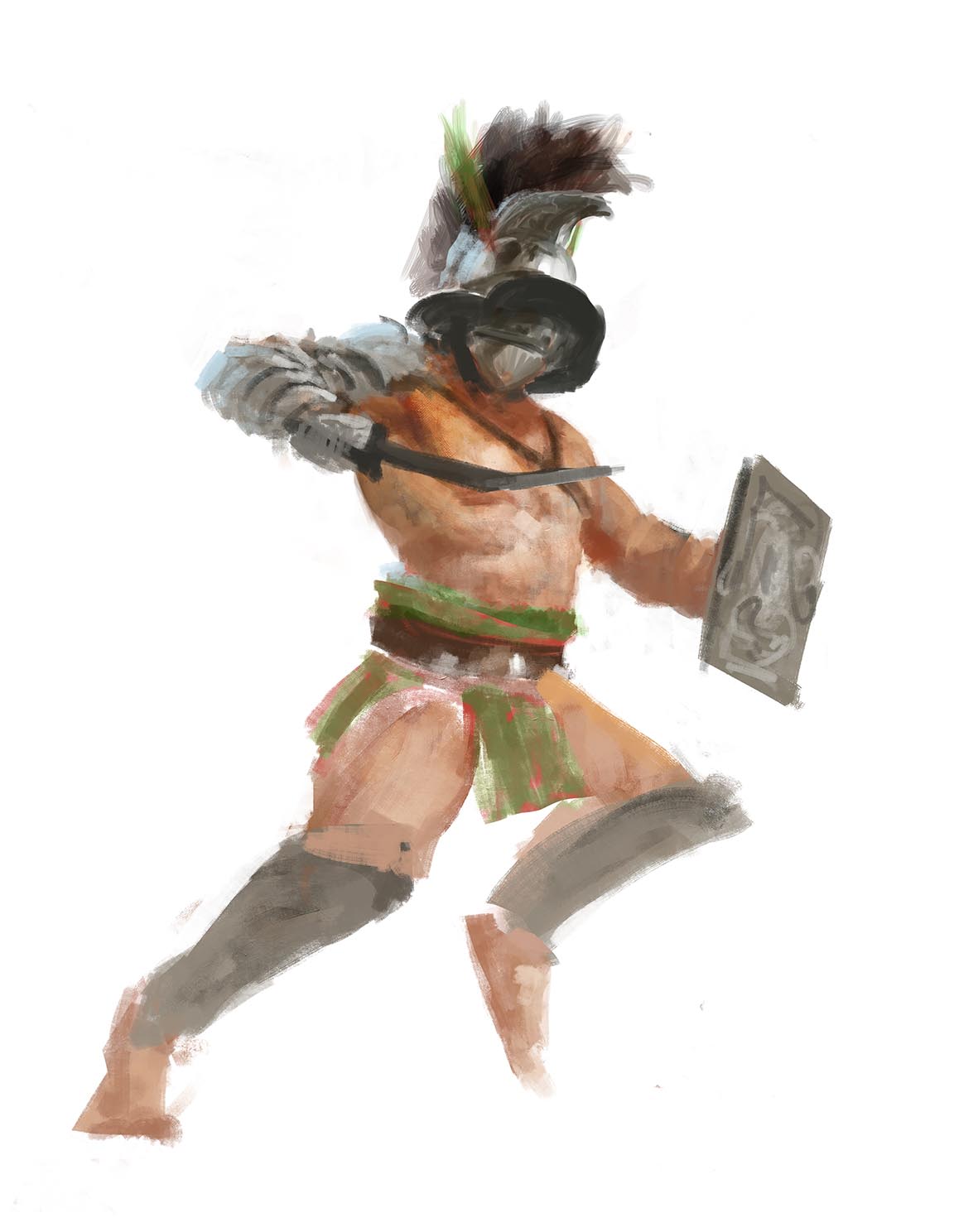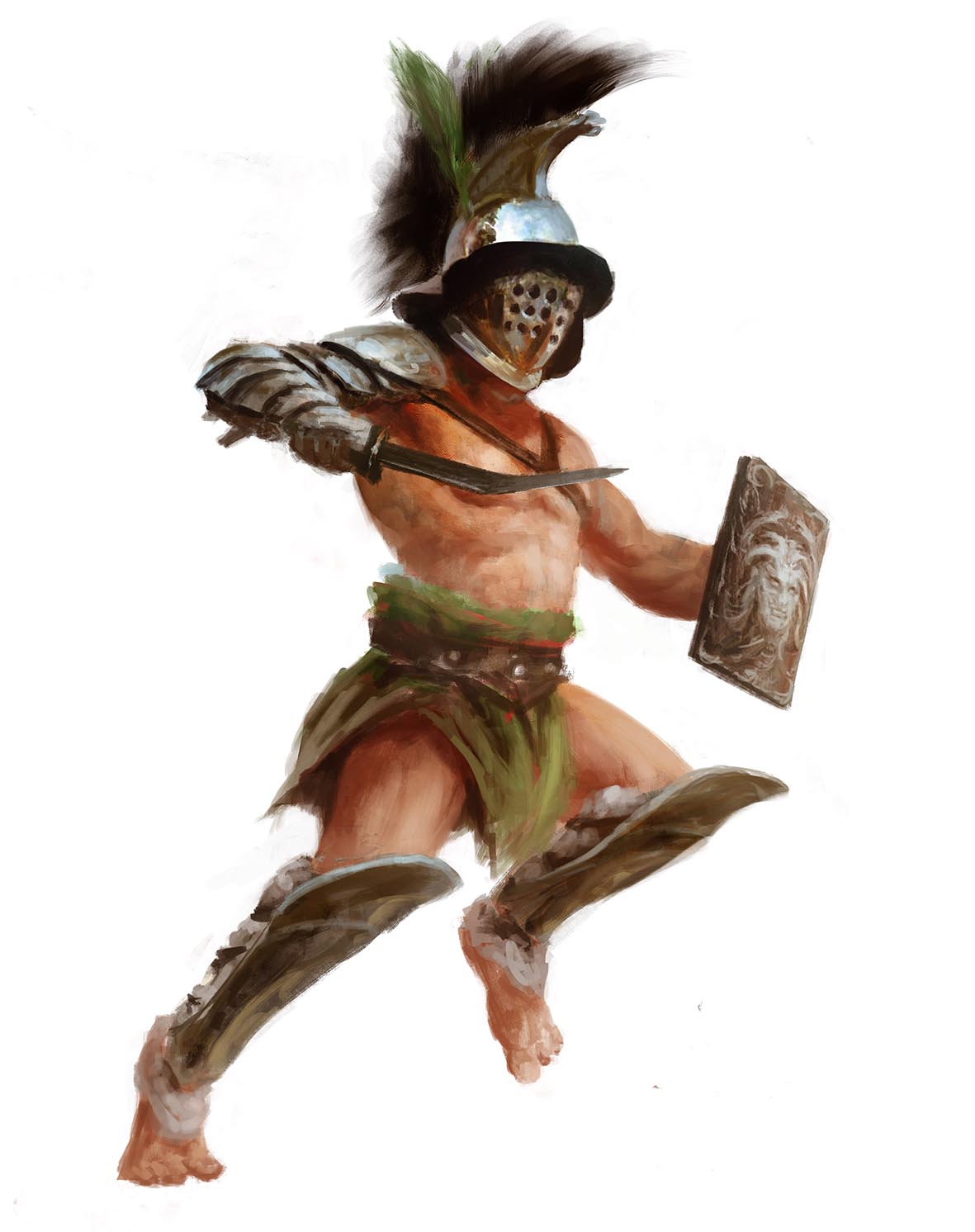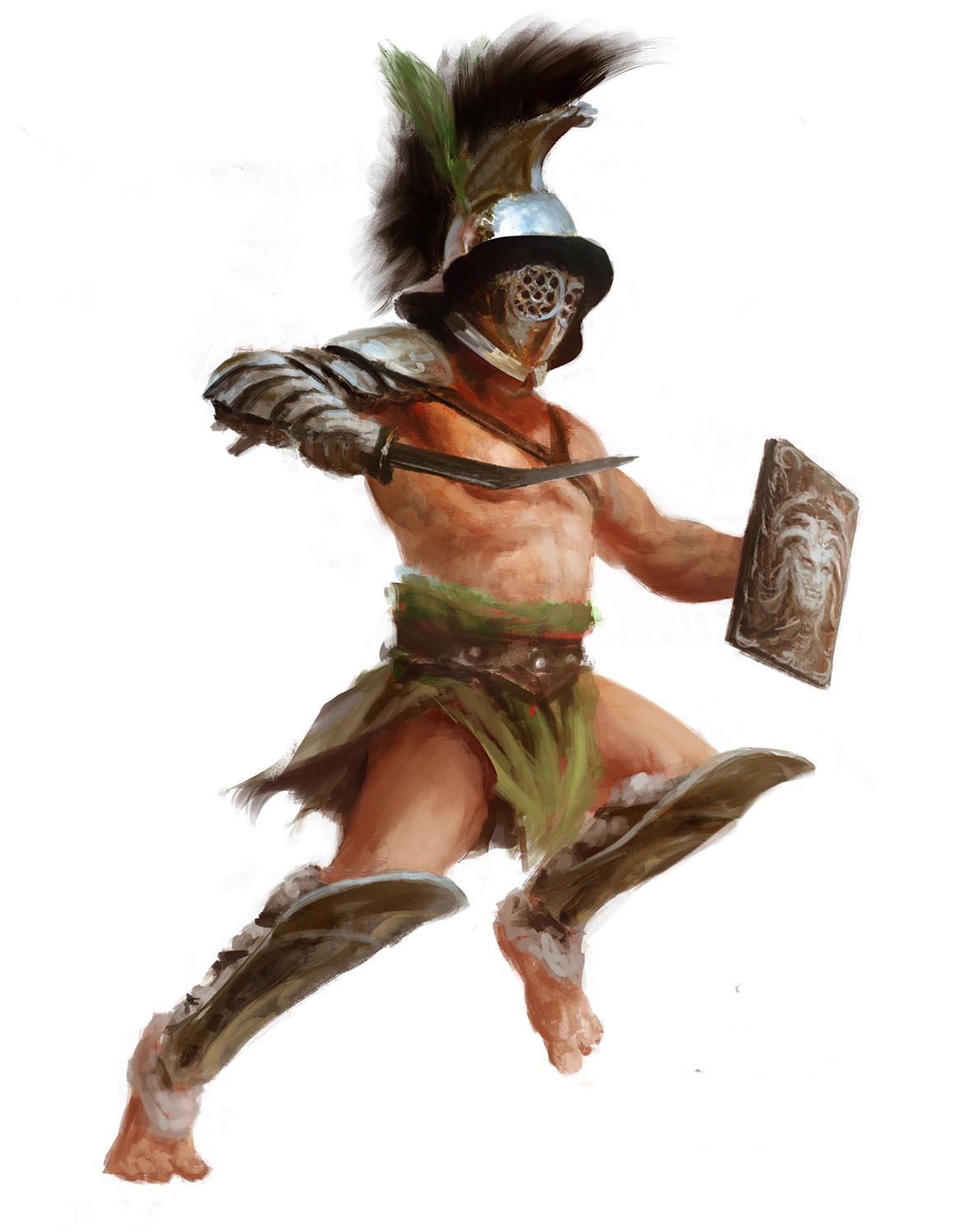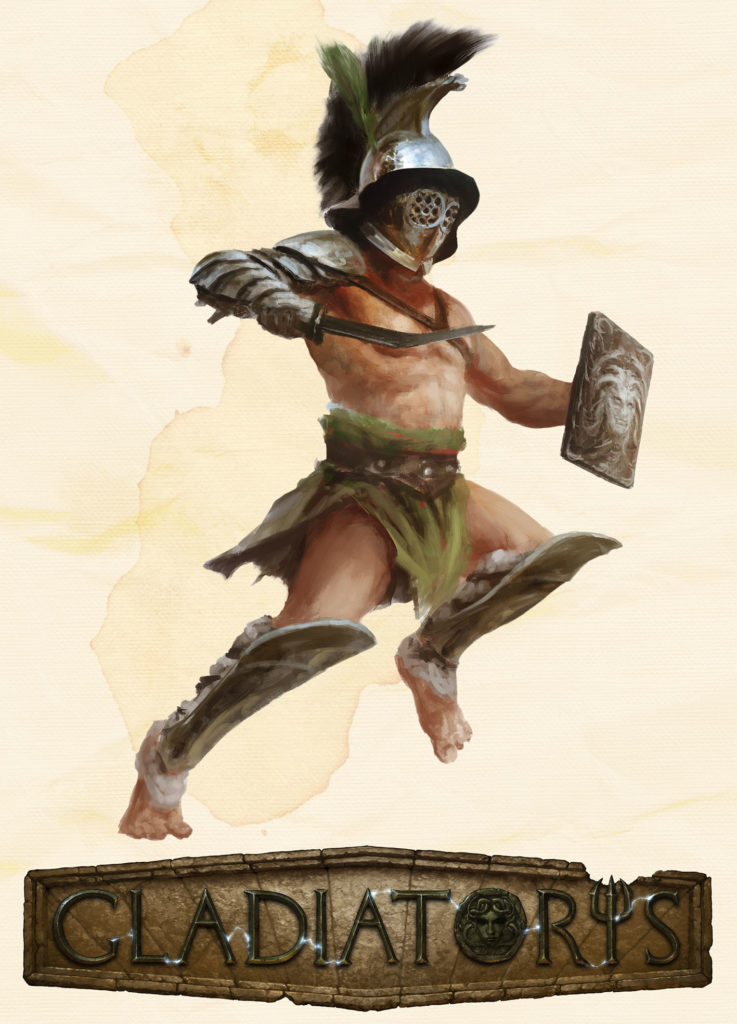 Thraex
Thraex
This gladiator is a typical Parmularii (Small Shields) that fights with a curved blade short sword, the sica, designed to overcome the enemy’s protection. His small shield can be used to block attacks or to hit the opponent. He’s one of the most feared fighters, because he’s able to make the most heavily armored gladiator bite the dust.
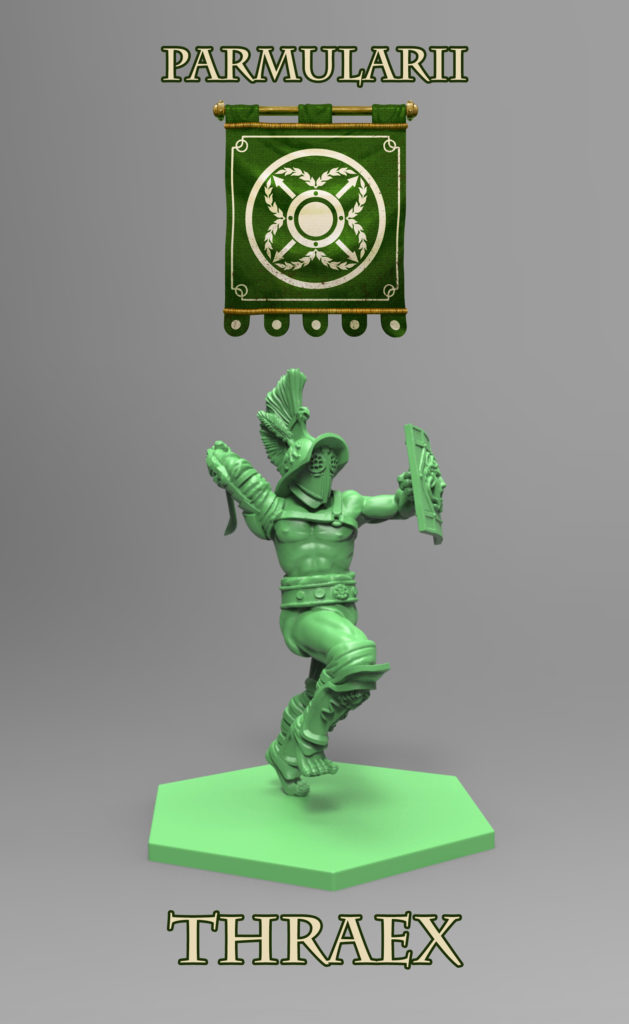
At Level III, he can spend an attack card to make a Strike with the Sica (increasing its damage), or a defense card to get a Block with Shield (increasing its defense). But his best move is his special ability, Overcome Shield, that reduces the enemy’s Defense Dice by 1 (except against Beasts)… stackable with the Sharp weapon ability! Taking away 2 Defense Dice from his rivals, the Thraex is specially effective against the Great Shields team, and lethal for the other teams. Obviously, his great offensive abilities make him the target of quite a lot of “preemptive strikes”.
Excerpt from the glossary of GLADIATORIS, checked by Alfonso Mañas.
Design process
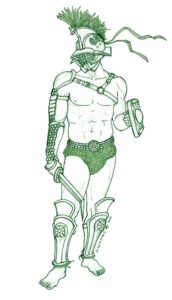
Actually, designing the best GLADIATORIS fighter (according to David, who admits being very partial on this) was very hard. He uses a very complex weapon, which gave us a few headaches before we could understand it… And that was because a lot of our historical sources ended up being inaccurate!
Following those sources, I had initially thought that the sica worked like a pick, or a sickle, and even described it that way in our first promotional video… Even against Alfonso Mañas best efforts to teach us the correct way of attacking with this curved blade.
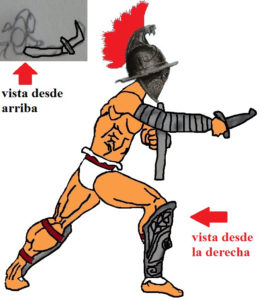
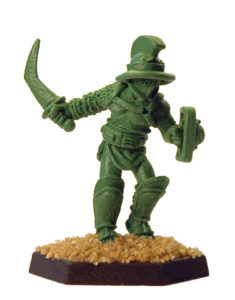
For years, my rivals had learned to fear and hate the prototype’s Thraex (a wonderful 28 mm gladiator from Foundry Miniatures) and I wanted to keep those feelings.
The shield, separated from the body an opposing the sica and ready to block or to hit, was one of his defining traits. Are not the best miniatures those we can play with to “hit” the opponent’s miniatures as if they were action figures?
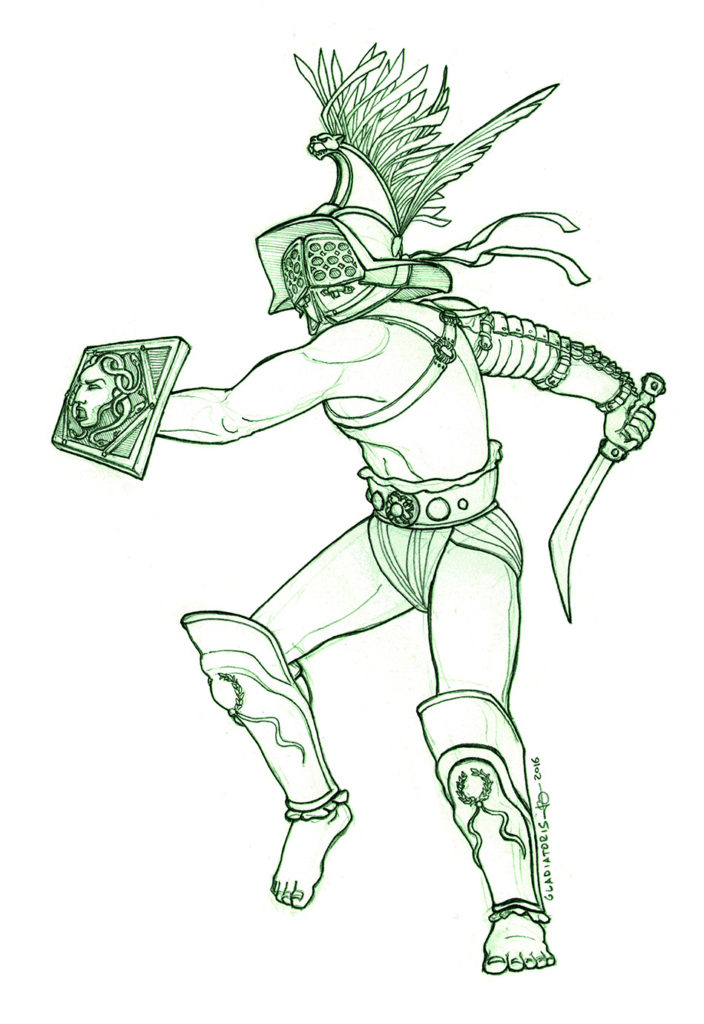
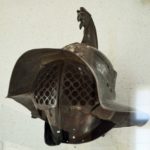 Instead of the Pompeian H7 helm, with straight visor, suggested by Alfonso Mañas, I decided to draw inspiration from the curved visor one from the Louvre, which I had photographed extensively, changing the griffon for a panther.
Instead of the Pompeian H7 helm, with straight visor, suggested by Alfonso Mañas, I decided to draw inspiration from the curved visor one from the Louvre, which I had photographed extensively, changing the griffon for a panther.
I copied the parma from a wonderful illustration by Angus McBride to make the umbo look like the relief of Medusa, Charles V-style!
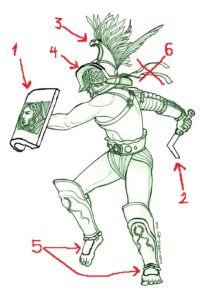 Alfonso Mañas made a lot of corrections:
Alfonso Mañas made a lot of corrections:
“1. The parma should have some curve to it, not a single one has been found as straight as it is in your picture (not even as a representation).
The grip was this way because the horizontal handle, thanks to the parma being curved, had room for the fingers. In some cases, for some less curved parmae, we assume that the handle protruded towards the body, forming some kind of arch. Some parmae had a vertical spina (to make it more resistant) but never an umbone.
Copying illustrations is usually a bad idea, because the artists are not gladiatura experts (even McBride, who illustrates Osprey’s gladiators books) and they commit mistakes.
2. The sica should have a shorter blade, yours is way too long (maybe influenced by McBride’s almost-scimitars).
3. At the helm’s crest, the thraeces had a griffon’s head (i. e., an eagle head). Changing it for a wolf’s or a panther’s head can be accepted for game coherence reasons (they are the green team animals), but it is not too right for me.
4. His helm’s brim must be wavy, not with angles you drew (we already had this problem with the Murmillo‘s helm).
5. In your sketch, the paddings protecting the foot’s instep from the ocrea’s weight are OK, but I think we can make them a little bit bigger.
6. I would eliminate the helms’ ribbons; no source mentions them.”
Naturally, negotiations took weeks, and both sides had to give in, but at the end, we could send the sculptors a detailed report. They answered us with the first tests:
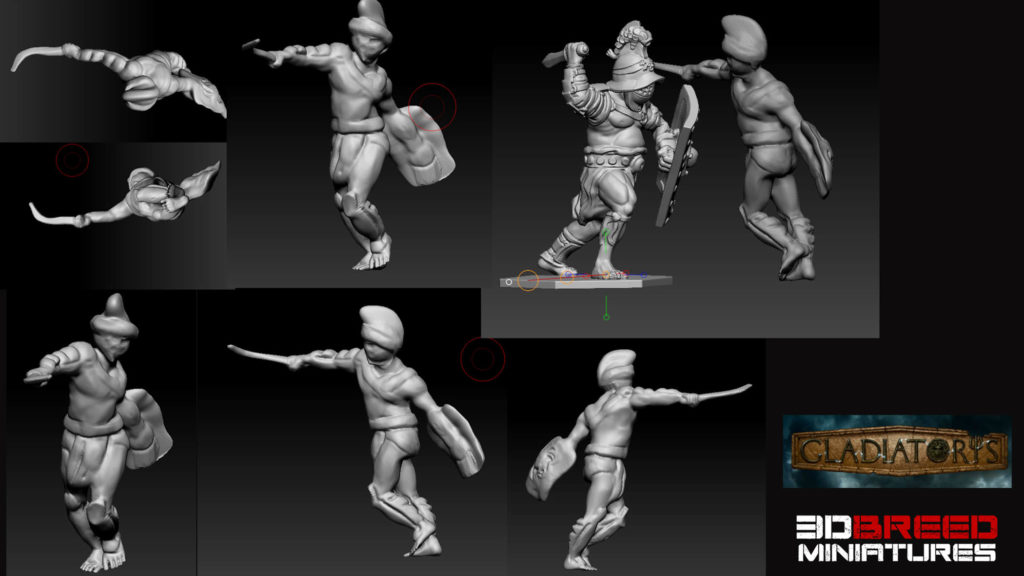
After giving it some thought, I chose the stance from my final sketch for the miniature: with a foot up, as if attacking while gathering force to leap, and with his arms separated, but not following the legs motion. He can be hitting or blocking with his shield, with the sica ready for an attack, or ending a slash motion.
David: “I’m excited with “my” miniature! 🙂
But the Medusa certainly needs a few Charisma points more ;)”
Alfonso: “I think it’s impressive, David, the stance and final look is spectacular. This is the standard we want for the rest of the miniatures.
It has almost no errors: the shield should be a little bigger, the sica is a little smaller and “L-shaped”, and the composite manica from your sketch (half-segmentata and half-squamata) is not accurate… It should be uniform. The former ones were segmentatas, this one could be squamata.
The helm is very good, they nailed it. I want to congratulate them. It’s obvious they are proficient at helm-making.
The crest is glorious.
How do you want to give the medusa more charisma? Do you want to use the face of some actress? We could use again Eva Green’s, or Jennifer Connelly’s, but they can take us to court (just joking) :)”
He says that because Eva Green inspired our Medusa logo, and Jennifer Connelly our Retiaria (“Helena”). It’s a long story, told in the 300-ish pages long novel-kept-in-a-drawer. Literally. And that’s why we can’t change the Thraex’s manica (he would no longer be Duccio, another character from the Gladiatoris universe).
David: “Regarding the sica, didn’t you told me that both models (curved and straight ones) coexisted? I like the curved better (the one that doesn’t look like Peter Jackson’s Uruk Hai weapons). We should keep the size in the miniature, even if we reduce it in the illustration.”
But watch out! The curved sica was even shorter than the L-shaped one. The curved sica was just a short hook, not an arab scimitar or a 17th century pirate sabre, as some representations make it look.
Remember that the gladiator’s combat style was a form of hand-to-hand combat, and to favor this they gave them very short-bladed weapons: this way, they were forced to get close.
About how a sica worked, it’s quite similar to the sickle, it’s held exactly the same way, with the point towards the enemy in front of you, be it a gladiator or a bundle of wheat.
Alfonso Mañas’ notes about how the Thraex used the sica.
So, after some more days discussing about sickles and axes (1D4-1D6 in the old times) we finally got our miniature.
Antonio José Manzanedo: “The miniature is wonderful, that goes without saying!”
We also loved Manzanedo’s first sketches (in spite of the red cape).
Vegetius says it clearly: slash strikes leave you open (that’s why barbarians are so easy to defeat), and also you can see them coming beforehand. Thrusting, on the contrary, does not leave your guard open (as they come from your chest and continue in a straight line). Your rival can’t anticipate it and the only thing they see is the point coming, stabbing them before they can react.
Alfonso Mañas’ notes about how the Thraex used the sica.
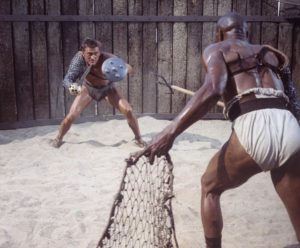
Once again, Alfonso Mañas’ logic proved to be crushing… or maybe “piercing”. 😉
We proposed a somewhat flexed arm, and we enjoyed ourselves watching peerless Kirk Douglas fight in Spartacus (Stanley Kubrik, 1960).
Manzanedo sent us four new proposals, and we chose the final stance. We had to modify the visor and some other details, and, finally, we got our (“my”) Thraex, for the fighter card and for both of the game’s covers.
3DBreed: “Please forgive my off-topic, but the helm’s reflections made me crazy, great work!”
Ready to carve some gladiators!

